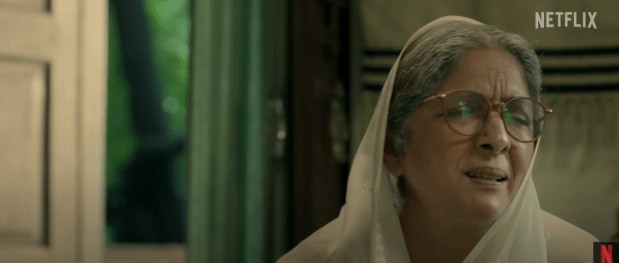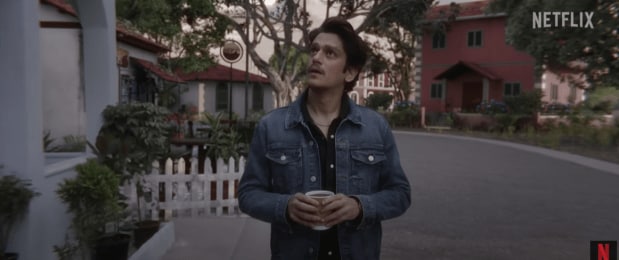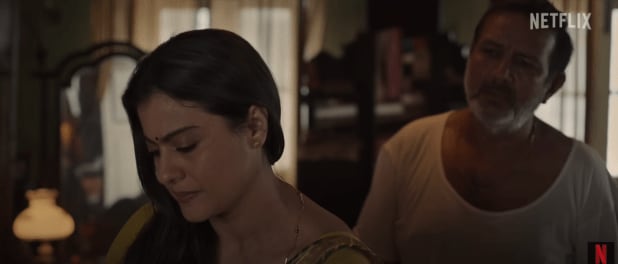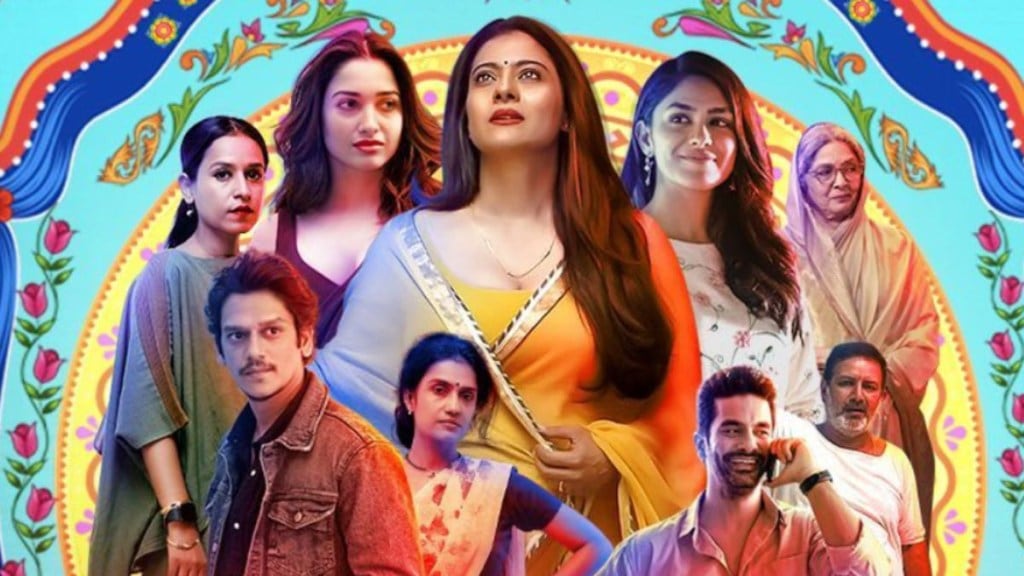I embarked on the journey offered by Lust Stories 2, hoping for a fresh and captivating exploration of the human experience. While the sequel may not match the brilliance of its predecessor, it still manages to offer thought-provoking narratives and captivating performances. The original anthology left an indelible mark on the landscape of modern Indian cinema, courtesy of the masterful quartet of Karan Johar, Anurag Kashyap, Dibakar Banerjee, and Zoya Akhtar.
Anthropology films in recent years have played a crucial role in documenting and understanding diverse cultures, shedding light on social issues, and fostering cross-cultural awareness. These films, often created by anthropologists themselves or in collaboration with filmmakers, serve as powerful tools for education, cultural preservation, and promoting social justice.
Anthology films have gained popularity in recent years, offering a collection of short stories that provide a diverse cinematic experience in a compact format. Netflix’s Lust Stories 2 is a sequel that explores the intricate realms of sex, desire, and satisfaction, with a focus on the theme of lust. Directed by four new and promising directors R. Balki, Sujoy Ghosh, Amit Ravindernath Sharma and Konkona Sen Sharma, the anthology presents four distinct tales, each offering a unique perspective on the subject matter. However, despite its potential, Lust Stories 2 falls short of expectations, delivering more misses than hits.
It has a very promising and talented cast Kajol (Amit Sharma’s Segment), Mrunal Thakur (R Balki’s Segment), Tamannaah Bhatia (Sujoy Ghosh’s Segment), Tillotama Shome (Konkona Sen Sharma’s Segment), Kumud Mishra (Amit Sharma’s Segment), Neena Gupta (R Balki’s Segment), Vijay Varma (Sujoy Ghosh’s Segment), Amruta Subhash (Konkona Sen Sharma’s Segment), Angad Bedi (R Balki’s Segment)
Story 1: “Made for Each Other” by R. Balki

“Made for Each Other” takes a light-hearted approach to the taboo subject of sexual compatibility in a happy marriage. With hilarious moments and Neena Gupta stealing the show, it offers laughs but lacks a concrete storyline. Audiences expected more involvement from Mrunal and Angad beyond their awkwardly laughing at dadi’s comments(that i can’t relate to) and constantly changing hotels. Unfortunately, Mrunal’s performance is underwhelming, hindered by unconvincing emotions and weak dialogues. Angad’s character, on the other hand, is severely underutilized with only five minutes of screen time, adding little to the overall narrative. It feels as though the filmmakers forgot about him entirely, which is a missed opportunity. Although it offers laughs and witty moments, the film feels more like a sex education ad stretched into a 30-minute short.
Story 2: “The Mirror” by Konkona Sen Sharma
“The Mirror” emerges as the true highlight of the anthology, with Konkona Sen Sharma’s directorial prowess shining through. “The Mirror” stands out as the highlight of the anthology, delving into female sexuality in a refreshingly bold and thought-provoking manner. The film takes viewers on a twisted journey, unraveling the story of a middle-class woman who unexpectedly discovers her maid engaged in sexual activity inside her home. Konkona, who skillfully directs this thought-provoking and humorous movie, delivers an outstanding short film that deserves our admiration. Both Tillotama Shome and Amruta Subhash deliver mind-blowing performances, making it impossible to choose the superior one in their engaging battle. Particularly noteworthy are the challenging scenes where they confront each other, showcasing their true talent. Konkona’s fearless approach, akin to the refreshing taste of spearmint gum, boldly explores women’s sexual desires without regard for societal boundaries. This aspect makes the film a joyous and captivating experience. Undoubtedly, The Mirror is the standout gem in the anthology, rendering the other three films almost inconsequential if not watched. Therefore, let’s rally together to petition for more directorial projects from Konkona. It’s time to embrace our desires and liberate ourselves from the constraints imposed by society.This short film is an absolute must-watch. At the end one would say it goes from whattttt to okayyy nice but creepy.

Story 3: By Sujoy Ghosh
Unfortunately, Sujoy Ghosh’s short film fails to live up to expectations. Despite the hype surrounding the leads, Vijay Varma and Tamannaah Bhatia, the film falls flat due to immature storytelling and unresolved plot elements. Sujoy Ghosh attempts to incorporate multiple genres within a tight 30-minute timeframe, which ultimately contributes to the movie’s downfall. The rushed storytelling fails to establish a strong foundation for the plot, resulting in a lack of depth and coherence. Additionally, the excessive use of CGI, reminiscent of Teletubbies’ sets, further detracts from the film’s realism. The unconvincing performances and childish set design add to the disappointment, making this film a rare misstep for Sujoy Ghosh.
Had the anthropology focused on providing more depth and a stronger, less convoluted plot, it might have redeemed itself. However, as it stands, the story’s flaws overshadow any redeeming qualities it might possess. With a lack of depth and a confusing plot, I would say it’s best to skip this disappointing entry.

Story 4: “Tilchatta” by Amit Ravindernath Sharma
The last story is indubitably my favorite. The anthology reaches its climax with the darkest and most poignant short film. It presents a tale of the king’s twisted desires, as he yearns to possess everything. Amit Ravindernath Sharma’s Tilchatta serves as a captivating conclusion to a quartet of films that explores a range of compelling themes. After the mundane and lackluster portrayal of domestic life in Made for Each Other, the anthology delves into narratives centered around pride, revenge, unfulfilled desires, buried secrets, toxic jealousies, oppressive feudalism, and the relentless pursuit of freedom.
Co-written by Saurabh Chaudhary and the director himself, Tilchatta takes audiences into a pitch-dark world. The film revolves around Kajol’s character, a powerless queen in a crumbling palace and a once-thriving kingdom. Kumud Mishra portrays a tyrannical feudal lord who dominates women, whether in his bed or elsewhere.
Amit Sharma’s “Tilchatta” provides a fitting end to the quartet, delving into themes of pride, revenge, and suppressed longings. Kajol delivers a powerful performance as a queen trapped in a deteriorating kingdom, while Kumud Mishra portrays the role of a feudal lord convincingly. Despite the need for a sharper edit, the dark and gritty narrative successfully engages the audience.

Lust Stories 2 fails to live up to the expectations set by its predecessor. Despite the standout performance in Konkona Sen Sharma’s “The Mirror” and Amit Ravindernath Sharma’s gripping “Tilchatta,” the other two shorts struggle to make an impact. While the anthology offers a few worthwhile moments, it falls short overall. Viewers may find it best to watch the second and fourth films, while skipping the others. While Lust Stories 2 may not quite reach the heights set by its predecessor, it still manages to offer a compelling anthology of narratives that explore the intricacies of lust, desire, and the human experience.
With a thematic consistency that resonates with viewers, Lust Stories 2 is a thought-provoking addition to the world of Indian cinema, offering a diverse range of perspectives and captivating performances
